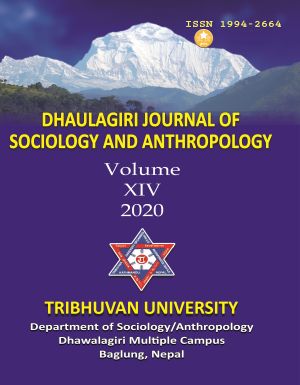Herding in Crisis in the Himalaya
DOI:
https://doi.org/10.3126/dsaj.v14i0.27232Keywords:
crisis, herding, Himalaya region, political-economic process, sustainabilityAbstract
This paper focuses on the change and transformation of herding over the last seven decades to the Nhāson Valley of Manang based on an ethnographic study in 2018. The findings reveal that herding as a traditional source of living for the mountain dwellers, has gradually been transformed due to the linkage to wider political and economic processes, namely, the changes in open-border policy between China and Nepal, the intervention of state programs and its policies toward the people, the expansion of trade and business with tourism, commercialization of Himalayan herbs, climate change, and intervention of agroforestry in the community forest and plantation of high-value cash crops in private lands, youth opportunities to work in aboard. Hence, looking at herding by placing it in a particular place or in isolation by ignoring the wider political and economic processes is misleading, one-sided, and superficial. Moreover, the market economy and the state intervention have brought some new livelihood opportunities to the Himalayan dwellers, although the questions always remain in its sustainability.




